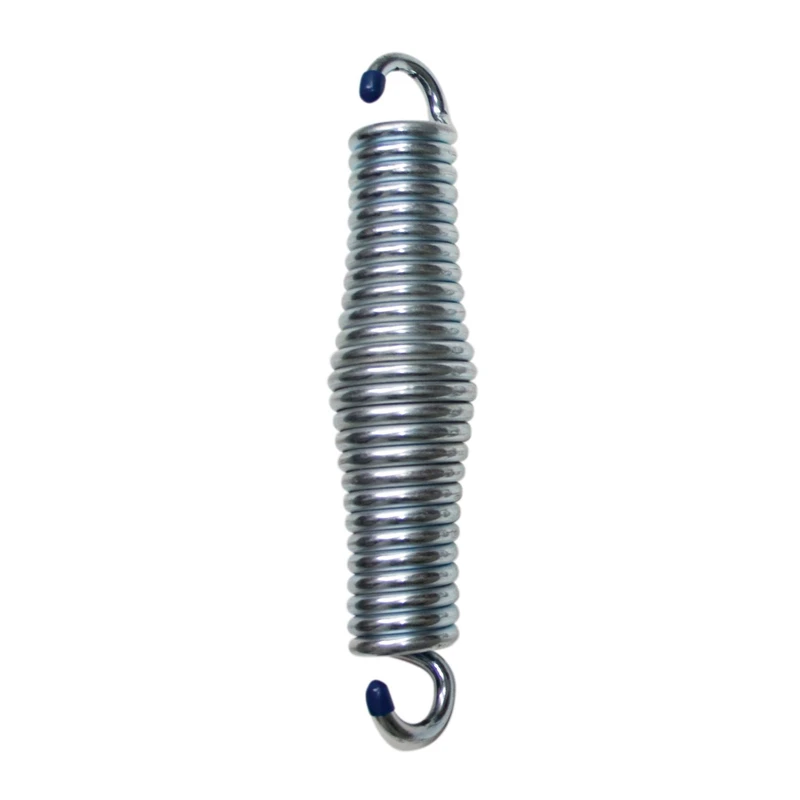
- Mobile Phone
- +8613931874955
- sales@cntcmetal.com
Innovative Coil Springs for Enhanced Performance in Pigtail Design Applications
Understanding Pigtail Coil Springs Design, Function, and Applications
Pigtail coil springs are an essential component in various mechanical applications. Characterized by their unique spiral shape that resembles a pigtail, these springs are designed to store and release energy efficiently. Their distinct form not only makes them visually appealing but also enhances their functionality in numerous systems.
Design Characteristics
The design of pigtail coil springs is crucial for their performance. Typically made from durable materials such as steel or stainless steel, these springs can withstand significant stress and environmental factors. The coil’s diameter, pitch, and number of turns are carefully calculated to optimize their elastic properties. The pigtail shape provides a compact design, allowing for better space utilization compared to traditional straight springs. This feature is particularly beneficial in applications where space is limited.
The unique geometry of pigtail coil springs allows for a significant amount of deflection, which is essential for applications requiring flexibility. These springs can accommodate large movements without losing their integrity or function, making them suitable for dynamic environments.
Functionality
Pigtail coil springs serve multiple functions, primarily involving energy storage and shock absorption. When a load is applied, the spring compresses or stretches, storing potential energy. Once the load is removed, the spring returns to its original shape, releasing the stored energy in the process. This mechanism is fundamental in applications such as automotive suspensions, where pigtail springs help absorb road shocks, providing a smoother ride.
Another critical function of these springs is tension and compression. In applications where components need to remain in contact or be drawn together, pigtail coil springs can exert a consistent force, ensuring operational efficiency. They are commonly used in devices like clamps, mechanisms for door latches, and various electronic devices.
pigtail coil springs

Applications Across Industries
The versatility of pigtail coil springs has led to their widespread use across various industries. In the automotive sector, they are integral in suspensions, providing stability and comfort for drivers and passengers. Similarly, in the aerospace industry, pigtail springs are used in landing gear mechanisms, helping to absorb the shock during landings.
In the medical field, these springs are seen in equipment that requires precise movements, such as in diagnostic machines and surgical instruments. Their reliability and ease of integration have made them a preferred choice for engineers designing innovative solutions.
Moreover, in the consumer product industry, pigtail springs can be found in everyday items such as ballpoint pens, where they facilitate the retractable mechanism, and in kitchen gadgets, enhancing functionality and user experience.
Maintenance and Considerations
While pigtail coil springs are robust, proper maintenance is crucial to ensure longevity. Regular inspections for wear and tear, especially in high-stress applications, can prevent failures that might lead to costly repairs or replacements. Additionally, understanding the load requirements and environment in which these springs operate is essential to select the right spring for the job. Temperature fluctuations, corrosion, and other environmental factors can affect the performance of springs, hence choosing the right material and finish is imperative.
Conclusion
Pigtail coil springs are an excellent example of engineering innovation, combining efficiency and functionality in their design. With diverse applications across multiple industries, these springs play a vital role in modern machinery and devices. Understanding their characteristics, functionality, and potential applications can help engineers and designers create more effective solutions that stand the test of time. By leveraging the unique advantages of pigtail coil springs, we can continue to push the boundaries of what is possible in mechanical design and engineering.
share:
-
Why Sacrificial Formwork Is Redefining Underground ConstructionNewsJun.06,2025
-
The Structural Dynamics of Modern Concrete: How Snake Spacers Revolutionize Flexible ReinforcementNewsJun.06,2025
-
Snake Spacers Smart-Lock Concrete Reinforcement with Surgical PrecisionNewsJun.06,2025
-
Snake Spacers: Reinforcement Precision for Modern Concrete ProjectsNewsJun.06,2025
-
Snake Spacers Powering Concrete's Structural DNANewsJun.06,2025
-
Slither into Success: Snake Spacers' Precision Bite for Unbreakable ReinforcementNewsJun.06,2025
-
Sacrificial Formwork: Building Stronger, Faster, and Safer StructuresNewsJun.06,2025



















